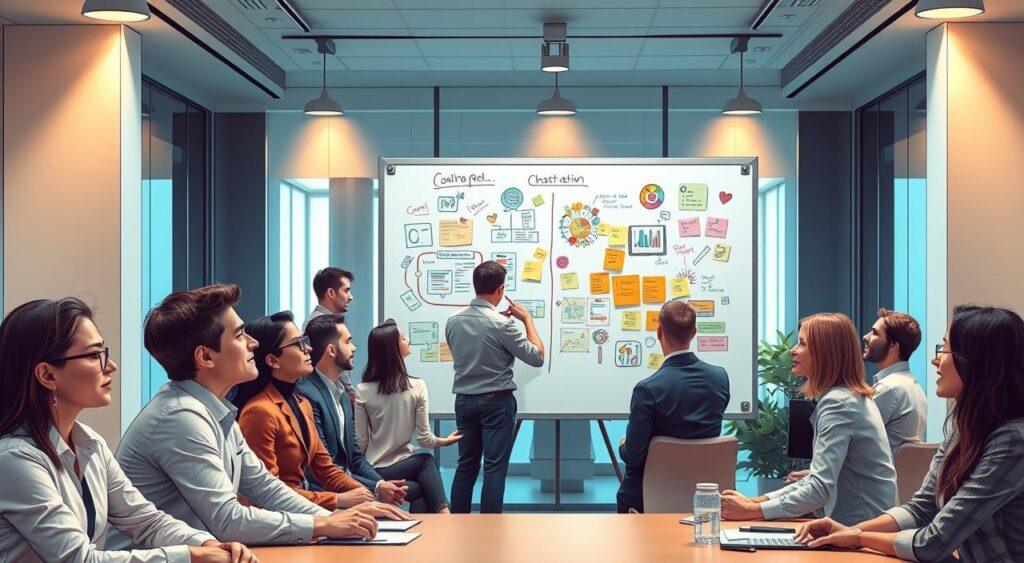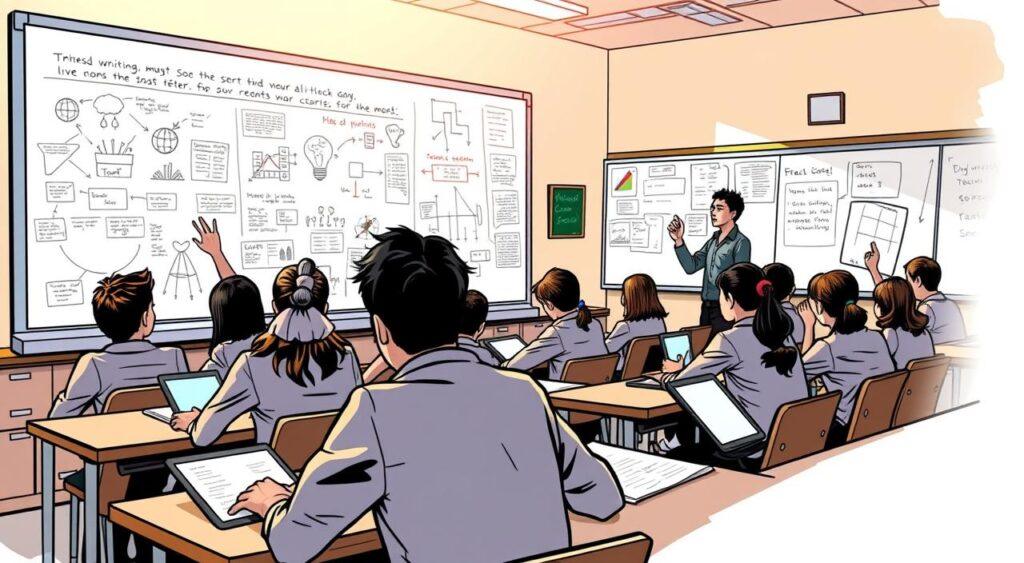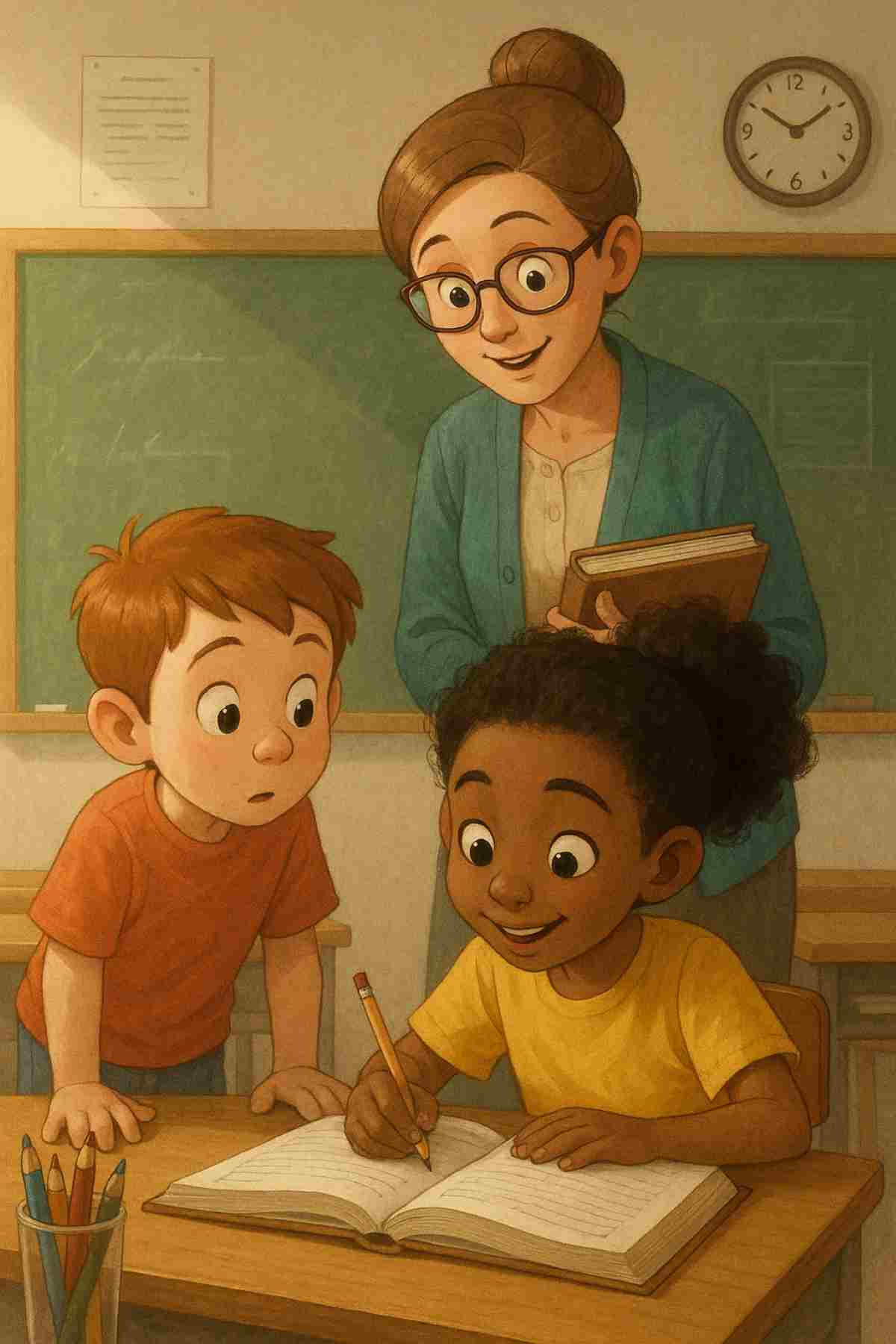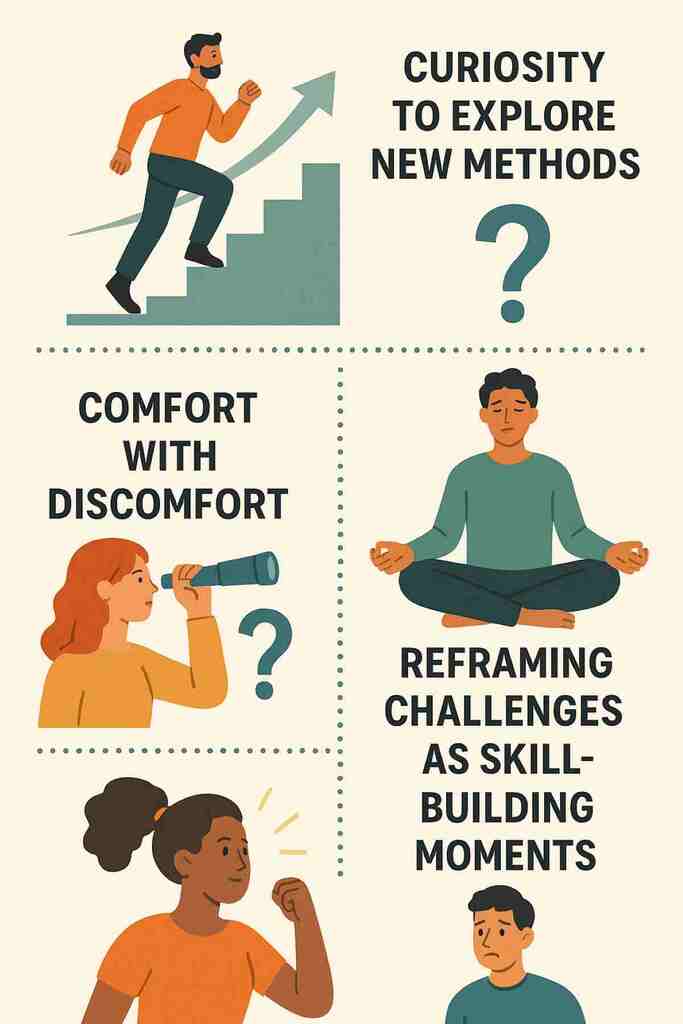The adaptation mental model is a key concept for thriving in uncertain times. Introduced by Kenneth Craik in 1943, it sees our minds as simulators. We test scenarios, adjust strategies, and refine our responses.
In today’s fast-paced world, being adaptable is a major plus. McKinsey found that adaptable companies grow revenue much faster than stiff ones.
Cognitive science backs this up, showing our brains learn and adapt through processes like Hebbian learning.
This model helps us make better decisions, avoiding detours and grabbing new chances. It’s all about being flexible, not just strong. The real question is, will you be ready for change when it arrives?
Key Takeaways
- Adaptation mental model: Proactive adaptation beats reactive scrambling every time.
- Your mindset acts like a navigation system for life’s changes.
- Early awareness of shifts creates decisive advantages.
- Success depends on updating your decision-making tools regularly.
- Organizations using this model outperform rigid competitors.
Introduction to the Adaptation Mental Model
Adaptability is key in today’s fast-changing world. The adaptation mental model helps us prepare for change, learn fast, and make smart choices when things are uncertain. It was first talked about by psychologist Kenneth Craik in 1943.
This model sees our minds as simulators of reality. It tests different scenarios and improves our responses. Like a GPS, it helps us navigate life’s twists and turns.
A 2022 McKinsey study showed adaptable companies grow faster than others. Neuroscience backs this up, saying our brains change to learn. For us, this means growing instead of just surviving.
By improving our thinking and staying ready for change, we can find new chances and avoid big mistakes. Adaptability is not just helpful; it’s essential for success in today’s fast world.
Updating your mental models isn’t about throwing away what’s good. It’s about keeping an eye out for changes around you. What small tweak could make your decision-making better today?
For instance, the OODA Loop Mental Model shows how quick cycles of observing, orienting, deciding, and acting can improve adaptability. This is key in situations that change fast.
Theoretical Foundations of the Adaptation Mental Model and Change

Picture a river reshaping its course—not randomly, but guided by the land’s hidden contours. This mirrors how our brains evolve through life’s challenges.
Studies reveal that neural connections rewire themselves constantly, creating new pathways as we learn. Hebbian learning, a core principle, shows that “cells firing together wire together”—reinforcing useful patterns over time.
Network-oriented models explain this process through dynamic systems. Imagine your mind as a city map where roads adjust based on traffic flow. Connections between ideas strengthen or fade based on what you practice. This approach helps predict how people adjust to new technologies or market shifts.
Why does this matter? Rigid systems break under pressure, while flexible ones bend and grow. A 2022 Oxford University Press analysis found that organizations using adaptive models recovered 40% faster from disruptions. They maintained core values while updating tactics—like a tree bending in wind without uprooting.
Successful change relies on balancing stability with agility. Researchers compare it to building with LEGO blocks: fixed shapes that create infinite combinations.
In the context of mental models, you keep foundational skills but rearrange them for new challenges. This concept is supported by various studies, including an insightful article from Cambridge University. How might your daily choices reinforce this dual focus?
Key Research Supporting the Adaptation Mental Model
Think of business success like assembling a puzzle—the pieces keep changing shape. Modern research reveals how organizations mastering this shifting landscape pull ahead. A 2022 McKinsey study shows adaptable companies grow revenue 3.2x faster than rigid peers. But why do most teams still struggle with change?
A Harvard Business Review article talks about “How to Become More Adaptable in Challenging Situations”. It says top leaders have a skill called Deliberate Calm. This skill helps them learn in tough and high-risk places, just like the adaptation mental model.
Adaptation Mental Model: What the Numbers Reveal
The McKinsey data paints a clear picture. Firms updating strategies quarterly saw 27% higher profit margins. Teams using real-time feedback systems adapted to market shifts 40% faster. Yet only 12% of leaders rate their organizations as “highly responsive.”
| Metric | Adaptable Companies | Rigid Companies |
|---|---|---|
| Revenue Growth | +14.8% | +4.6% |
| Employee Retention | 82% | 61% |
| New Market Success | 1 in 2 | 1 in 8 |
Historical Lessons on Adaptation and Mental Models
Historical studies tracked 200 companies through economic cycles. Those surviving recessions shared three traits: decentralized decision-making, cross-training programs, and scenario planning. Google Scholar archives show similar patterns in 1920s manufacturing and 1990s tech firms.
Academic research now races to explain these findings. A 2023 review found only 17% of cognitive frameworks and learning models have computational models. This gap leaves practical tools scarce—but creates opportunities for early adopters. For example, a recent article on Google Scholar highlights the importance of developing a higher level of understanding of mental models.
How might your team bridge theory and practice? What one process could become more fluid this quarter?
Adaptation Mental Model: Evidence from Cognitive Psychology and Business Studies
Cognitive psychology shows that adaptability is deeply rooted in how our brains process new information. Research on neuroplasticity shows that the brain changes its connections when faced with new challenges. This supports the idea that being flexible leads to better decision-making.
Hebbian learning, or “neurons that fire together, wire together,” explains how repeated exposure to change builds lasting mental frameworks. This evidence supports the adaptation mental model as a tool for continuous growth.
Business studies back these findings with data. A 2022 McKinsey report found that adaptable companies grew 3.2 times faster than less flexible ones. An Oxford University Press analysis showed that adaptive firms recovered 40% quicker after economic disruptions.
Leaders who use feedback, scenario planning, and cross-functional training do better than those who stick to static models. These insights show that adaptability is not just a mindset—it’s a proven strategy for success in uncertain times.
Nature’s Lesson: Extinction and the Importance of Adaptation

History’s library holds stories of survival written in stone and bone. Over 99% of species that couldn’t adjust to change vanished forever. Take the mighty dinosaurs—their massive size worked until asteroids shifted Earth’s climate. Smaller mammals thrived by altering behaviors and diets, showcasing the importance of mental models in adapting to new conditions.
Modern ecosystems reveal similar patterns. Arctic foxes changing fur color with seasons outlast rivals, illustrating key implications for mental models in adaptation, as discussed in various Google Scholar articles.
Coral reefs adapting to warmer waters survive bleaching events, showcasing the importance of flexible models in survival strategies. Flexibility beats brute strength every time.
| Trait | Extinct Species | Survivors |
|---|---|---|
| Size | Oversized bodies | Moderate build |
| Diet | Specialized food sources | Varied eating habits |
| Habitat Flexibility | Fixed territories | Multiple environments |
| Reproduction Rate | Slow breeders | Rapid reproducers |
Look at today’s climate shifts. Birds altering migration routes by weeks. Plants blooming earlier to match warmer springs. These aren’t random acts—they’re strategic responses to preserve life.
Your personal growth follows the same system. Sticking to outdated methods risks irrelevance. What daily habit could use a subtle tweak to better match your evolving world?
Business Case Study: Blockbuster vs. Netflix
In 2000, two entertainment giants faced a crossroads. Blockbuster dominated physical rentals, while Netflix mailed DVDs. When streaming emerged, their paths diverged sharply—one became obsolete, the other redefined an industry. This clash of visions offers a textbook example of strategic flexibility in business.
Blockbuster’s leaders focused on store expansions and late fees. Netflix, however, saw changing viewer habits as an opportunity. Their model prioritized convenience over physical locations—a crucial shift in context that Blockbuster missed.
By 2007, Netflix launched streaming, risking their DVD revenue. Blockbuster dismissed this move, clinging to retail outlets. Tech innovation accelerated the impact—Netflix gained 23 million subscribers by 2010 as Blockbuster filed for bankruptcy.
| Factor | Blockbuster | Netflix |
|---|---|---|
| Core Focus | Physical stores | Digital access |
| Response to Change | Defensive | Proactive |
| Revenue Streams | Late fees | Subscription |
Netflix’s willingness to disrupt itself created lasting value. Blockbuster’s rigid model left them unprepared for market shifts. Their story teaches a vital lesson: survival depends on recognizing when old systems no longer fit new realities. What outdated process might your organization need to sunset?
Netflix showed how to create lasting value by changing itself. Blockbuster, on the other hand, stuck to its old ways and missed out. This shows the importance of being able to adapt.
This idea is linked to the Two-Way Door Mental Model. It’s about making decisions that can be changed. This way, businesses can try new things without losing everything.
Organizational Strategies for Applying the Adaptation Mental Model

Agile businesses dance with uncertainty, turning market shifts into strategic steps. They design layered learning systems that evolve as conditions change—like software updating itself overnight. This approach transforms potential threats into fuel for innovation.
Top-performing organizations operate early-warning radars. Cross-functional teams analyze weak signals—a supplier’s delayed shipment, a regional sales dip—to spot trends before rivals. One tech firm reallocated resources based on forum chatter about user frustrations, gaining six months’ lead on competitors.
Three pillars define this mindset:
- Decentralized experiments: Local teams test small-scale solutions
- Learning ecosystems: Real-time data flows between departments
- Psychological safety: Employees share ideas without fear
These actions create compounding advantages. A retail chain using this method reduced product launch cycles from 18 months to 6 weeks.
Their secret? Treating every store as a lab for customer-driven innovation, providing an overview of the implications of mental models on understanding customer interaction. Each person involved plays a critical role in this innovative process.
Leaders who master this strategic thinking build organizations that bend without breaking. They know rigid plans crumble when markets shift—but flexible frameworks thrive. What outdated rule could your team replace with a guiding principle today?
Essential Insights Into The Adaptation Mental Model
Your brain works like a dual-layer operating system. One layer handles routine tasks—like autopilot making daily choices. The other watches for patterns, adjusting strategies when conditions shift. This layered approach turns ordinary thinking into a precision tool for growth.
High performers use this two-tiered framework intentionally. Base-level decisions flow smoothly while meta-cognition evaluates their effectiveness. Studies show this creates self-correcting loops—actions inform thinking, which then refines future actions.
| Process Level | Function | Outcome |
|---|---|---|
| First-Order | Handles immediate tasks | Daily decisions |
| Second-Order | Monitors thinking patterns | Strategic adjustments |
| Integration | Links both levels | Sustainable growth |
Conscious control separates thriving systems from stagnant ones. Like a chef tasting their soup mid-cook, you can assess your cognitive frameworks. Update outdated assumptions before they limit progress.
Organizations using this approach see 31% faster problem-solving. Teams review workflows quarterly—not yearly—to stay aligned with market shifts. Individuals apply similar principles through weekly reflection sessions.
What automatic process could benefit from your intentional attention today?
The Role of Observational Learning in Adaptive Processes
Your eyes do more than see—they’re silent teachers shaping your decisions every day. From childhood, we absorb skills by watching others. A toddler mimics parents’ gestures. Teens copy social cues from peers. Adults refine workplace habits by observing colleagues. This learning process happens automatically, like breathing.
Mirror neurons make this possible. These brain cells activate when you perform an action or watch someone else do it. Imagine practicing a tennis swing just by studying a pro’s movements. Your neural pathways strengthen without physical repetition. Studies show this role in skill development impacts everything from language acquisition to leadership styles.
Consider workplaces where new hires shadow experienced team members. They gain tacit knowledge faster than through manuals alone. One example: surgeons-in-training observe hundreds of procedures before operating. Their brains catalog techniques, errors, and solutions through observation.
The key lies in curating what you watch. Surround yourself with those demonstrating behaviors you want to adopt. Like choosing high-quality ingredients for a recipe, selective observation fuels growth. Who inspires your daily choices? What subtle habits could you adopt through intentional watching?
Agile learners succeed by constantly improving. They test ideas quickly, like app developers do. They launch prototypes, get feedback, and then make things better.
This approach is based on the Optionality Mental Model. It’s about keeping many options open. This way, you can change direction fast when things change.
Instructional Learning and Its Impact on Mental Models

Imagine standing at the edge of a dense forest with two guides: one hands you a machete, the other a detailed map. Instructional learning works like the map—it gives you proven paths to navigate unfamiliar terrain. For beginners, this learning method cuts through confusion by providing structured information from those who’ve already mastered the journey.
Expert guidance transforms random experiments into focused progress. A music teacher explains finger placements that took years to perfect. A coding mentor shares shortcuts to debug software faster. These insights help build accurate mental models without endless trial and error.
Three ways quality instruction creates lasting impact:
- Pattern recognition: Experts highlight connections beginners overlook
- Error prevention: Warns about common pitfalls before they derail progress
- Framework development: Organizes knowledge into usable systems
Great teachers don’t just share facts—they reveal how to think. Like a chef explaining why ingredients react to heat, they help you internalize principles. This strengthens your ability to adapt mental models as challenges evolve.
Balance is key. Over-reliance on instruction stifles creativity, while too little leaves you wandering. The sweet spot? Use expert maps to navigate, then chart your own trails. What skill could benefit from a mentor’s roadmap this month?
Integrating Observational and Instructional Learning

Adapting well doesn’t just come from one way of learning. The best learners mix observational learning—watching others to learn instinctively—with instructional learning. This method combines creativity with precision.
Think about learning a new language. Watching native speakers helps you get the accent and rhythm right. But, taking lessons gives you the grammar and words you need.
In work, watching experienced colleagues gives you hidden knowledge. Getting guidance from mentors helps you avoid big mistakes.
When you learn, timing is key. First, observe to understand the context. Then, get instruction to polish your skills. It’s like a chef tasting as they cook, refining their dish.
Ask yourself, are you balancing watching and learning, or leaning too much on one?
Timing and Control in Adaptive Skill Development
Imagine learning to drive. At first, you watch others handle intersections. Then, an instructor teaches you about mirror checks and traffic rules.
This order is key. Watching first gives you a foundation for what comes next. Research in cognitive psychology backs this up. It shows that starting with observation leads to better retention and quicker skill mastery.
Getting the timing right is also important. It makes learning not just quick but also lasting. This approach ensures that you can adapt and keep learning over time.
Feedback Loops in Adaptive Learning Systems
Your phone’s navigation app recalculates routes when you miss a turn. Learning works the same way. It needs real-time feedback loops to adapt well.
Immediate corrections are key to improving. This is true whether you’re adjusting a tennis swing or a business strategy.
Studies show that systems with quick feedback can get up to 40% faster than those that don’t.
Adaptive Processes in the Digital Age
Your smartphone updates overnight—silently installing improvements while you sleep. Modern success works the same way. Skills now expire faster than milk cartons. A 2023 LinkedIn study found 40% of workplace abilities lose relevance within three years. Staying relevant means treating growth like daily software patches.
Data streams flood our screens hourly. The trick isn’t drinking from the firehose—it’s building smarter filters. Top performers use networks to separate signals from noise. They follow niche experts, not trending hashtags. Curate feeds like a museum director selecting masterpieces.
| Aspect | Traditional Approach | Digital-Era Strategy |
|---|---|---|
| Learning Speed | Annual workshops | Weekly micro-lessons |
| Information Sources | Limited channels | Global networks |
| Skill Longevity | 5+ years | 18-24 months |
Agile learners win through rapid iteration. They test ideas like app developers—launching prototypes, gathering feedback, refining features. This process turns uncertainty into fuel. Dropbox grew by watching users struggle with email attachments. They adapted their cloud storage model to match real needs.
Tools amplify adaptability when used with purpose. Set app limits to protect focus time. Schedule “learning sprints” to master emerging platforms. What outdated filter could you replace this week to stay ahead?
Digital Tools and Microlearning in the Adaptation Mental Model
The digital era has made change faster, making adaptability key. LinkedIn (2023) found that 40% of workplace skills lose relevance within three years. This shows we must keep learning. The adaptation mental model helps us thrive by making us agile and quick to learn new skills.
Microlearning is a big help. It’s short, focused lessons on digital platforms. This way, people can stay up-to-date without long breaks. Research in cognitive psychology backs this up, saying short lessons help us remember better and adapt faster.
Technology also helps us adapt with algorithmic feedback loops. Like how a GPS app changes routes, digital systems give us instant feedback. This lets us adjust plans fast. With reflection and planning, these tools turn uncertainty into chances to grow and stay relevant.
Enhancing Personal Adaptability and Growth

Life’s unexpected turns test our capacity to evolve—those who pivot thrive. The pandemic revealed this truth starkly. Workers who mastered video conferencing and digital collaboration tools didn’t just survive; they gained promotions while others faced obsolescence. Resilience here wasn’t about raw talent, but willingness to relearn.
What separates those who grow through change? Research highlights three factors: curiosity to explore new methods, comfort with discomfort, and reframing challenges as skill-building moments. These traits turn upheaval into upward momentum.
Build your ability to adapt by treating shifts as invitations to upgrade. Like a gardener pruning for healthier growth, identify outdated habits. Nurture curiosity through small experiments—try a new app, attend a workshop, or shadow a colleague.
Adaptable characteristics emerge through practice, not DNA. Start by asking: What one skill could make you an indispensable part of tomorrow’s workplace? This is an example of how adaptability models can address various issues in professional growth.
Conclusion
In today’s fast-changing world, being adaptable is key. The adaptation mental model helps us prepare for change, learn fast, and make flexible decisions. Our brains are designed to adapt, creating new paths and letting go of old ones.
Business stories like Netflix beating Blockbuster show the power of being flexible. Rigid systems fail, but adaptable ones grow stronger with feedback and teamwork.
Think about what’s holding you back from thriving in uncertainty. To improve your adaptability, check out models like the OODA Loop Mental Model for quick decisions, the Two-Way Door Mental Model for reversible choices, and the Optionality Mental Model for managing risk.
Using these models together can help you grow from change, not just survive it.


